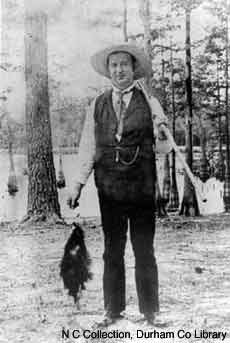James B. Duke

James Buchanan "Buck" Duke (1856-1925) was the youngest child of Washington and Artelia Roney Duke. After his father's return from Confederate service in the Civil War, young Buck joined the rest of his family in manufacturing smoking tobacco and, after their relocation to Durham from the farm in 1874, became the visionary and driving force behind the company's rapid growth.
Determined to "tame the Bull [Durham]," Buck Duke invested heavily in mechanizing cigarette production, which greatly cut the company's overhead and eliminated most of its labor difficulties. Immediately upon installing Bonsack rolling machinery in the Durham factory, Duke left to open a branch plant in New York City and resided there, on an estate in New Jersey, for the rest of his life.
By 1890, Duke controlled 90 percent of U.S. cigarette production through his American Tobacco Co. and went on to bring loose tobacco, chewing tobacco and snuff within the corporate fold. By the time the Supreme Court broke up the "Tobacco Trust" in 1911, Duke's interests had expanded into hydroelectric power and his Southern Power Co. (now Duke Energy) was rapidly electrifying towns and factories in the Carolinas.
William Preston Few, president of Trinity College in Durham, which had survived since moving to Durham in 1892 only through the Duke family's benevolence, interested Buck in leaving a financial memorial to his father with the college. In 1924, Duke created the Duke Endowment (headquartered in Charlotte, home base of the Southern Power Company, rather than Durham) to support charitable causes in the Carolinas, including an annual allowance to Trinity College on condition the college change its name in honor of Washington Duke. The trustees promptly complied and, with an additional gift of several million dollars, became Duke University.
Buck Duke died the following year. After completion of the Duke Chapel on the school's new West Campus, his body, along with those of his father and brother Ben, was moved from the family mausoleum in Maplewood Cemetery and interred in the Chapel crypt.